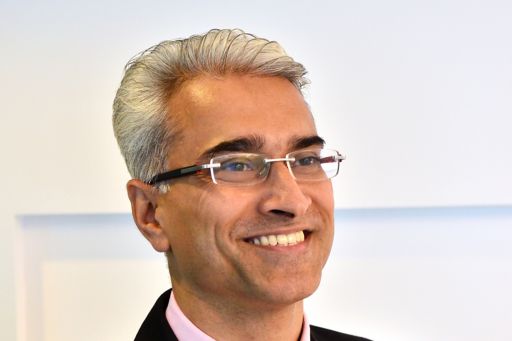As we look to move past the acute phase of COVID-19, the global economy is grappling with understanding the enormity of the economic impact it leaves in its wake. A Cambridge study predicts that the global economy could face a loss of some US$26.8 trillion, or 5.3%, of global GDP in the coming five years1 and The World Economic forum points to prolonged economic recession, bankruptcies and sector consolidation, collapse of hardest hit sectors, high rates of unemployment, and restriction of movement of people and goods as the top five expected consequences of the crisis.2 Governments around the world are looking to create stimulus packages that will boost both immediate and sustainable economic growth and are increasingly looking to identify shovel-ready infrastructure projects as one solution to help them do this.
Infrastructure has a legacy of being linked to both immediate economic growth (in its ability to create jobs, generate earnings and boost spending), and longer-term growth (by increasing accessibility to employment, enhancing education opportunities through better connectivity and increasing equality through access to critical utilities). To quantify this, we can refer to a study by Business Roundtable which suggests that over a timeline of 20 years, there is an additional US$3.7 injected into the economy for every US$1 invested in infrastructure.3
The green infrastructure opportunity
The COVID-19 crisis has also highlighted our vulnerability and the need to strengthen our resilience to future threats to humanity – including that of climate change – and there are calls from governments and industries to create stimulus packages that will enable a green recovery. It is critical that infrastructure investments included in these packages be conditional on alignment with sustainability recommendations and climate targets. OECD estimates that 60% of current global emissions are from infrastructure4 so the infrastructure we build now will determine our ability to meet the 2050 Net Zero targets outlined by the Paris Agreement.5
In addition to the environmental and societal benefits of green infrastructure, there is also a strong economic case to be made for investing in green rather than fossil fuel intensive assets:
- Renewable power continues to be cheaper than fossil fuel based power generation. The latest report by IRENA - Renewable Power Generation Costs 2019 - states that by 2021, up to 1200 gigawatts of existing coal-fired capacity will cost more to operate than new utility-scale solar PV would cost to install. Fossil fuel generated power is no longer just environmentally and socially detrimental but becoming increasingly economically unsustainable.6
- The International Energy Agency (IEA) highlights the role of energy efficiency to drive economic stimulus through job security and diversification, boosting activity in local supply chains and construction and increasing competitiveness, leading to improved energy affordability in addition to lowering carbon emissions.7
- A new report by the United Nations Economic Commission for Europe (UNECE) and the International Labour Organization (ILO) - Jobs in green and healthy transport: Making the green shift - predicts that the electrification of transport could create 15 million jobs worldwide through the manufacturing of electric vehicles and doubling investment in the public transport sector.8
- A shift towards smart, circular and sustainable construction methods and use of sustainable materials could boost jobs in the construction sector and across supply chains along with lower costs for project owners as well as for users. Supportive policy and stimulus packages requirements can help drive growth in sustainable construction materials for example green cement.
Why Emerging Markets?
COVID-19 has hit emerging economies the hardest and many are in acute need of initiatives to boost economic growth. In March 2020 the IMF reported that emerging markets will require at least US$2.5 trillion in financial support9 and the World Bank estimates that between 40-60 million people will be pushed into poverty.10
The opportunity to invest in these markets is substantial. Emerging markets present the fastest growing demand for infrastructure in the world and the Global Infrastructure Hub predicts a US$15 trillion infrastructure investment gap globally, with emerging markets making up over half of this need. The fact that these demands largely point to greenfield projects presents an opportunity for investors to enhance their ESG investment portfolios, given the ability to leapfrog the fossil fuel intensive assets of the developed market and move straight to constructing smart and sustainable solutions.
The world has already been seeing a shift in supply chains to emerging markets, boosting economic growth. Governments in emerging markets need now, more than ever, to attract international and private sector capital to help fund the infrastructure requirements for their societies and to capture the opportunity of sustainable infrastructure.
How do we attract capital to these opportunities?
We know that there is already a substantial pool of private capital in the market and a report by RICS suggests enough private capital to develop US$1 trillion of infrastructure is currently going unspent.11 Attracting investment into emerging markets has faced a long legacy of roadblocks including socio-political risk, issues around land ownership and legal frameworks, and weak project pipelines. How do we grow and direct this capital into a part of the world that is facing the most severe impacts of COVID-19 and also offers substantial opportunity to invest in sustainable infrastructure?
To help answer these questions we spoke to our global and regional infrastructure finance and investment leads. In the sections to follow, they help to identify the green infrastructure opportunities in their regions and the ways in which we can navigate barriers to investment.

ASPAC
Sustainable infrastructure investment opportunities
- Energy efficiency: Given the high energy intensity and low efficiency in various industries in the region, governments are pushing the agenda for energy conservation. Most industries including road, rail, aviation and ports are being encouraged to calculate, monitor and optimize energy consumption. City governments are also taking on projects like converting street lighting to LED with the help of multilateral agencies. The Asian Development Bank, for example, is supporting a smart street lighting project in Malaysia among other places.
- Green transport: Green Transport provides a range of investor opportunities in ASPAC. Several countries and jurisdictions in the region prioritize low carbon transport initiatives including electrical vehicle charging infrastructure, electrification, greenways for cyclists, smart ports and efficiencies including mobility as a service (MaaS) platforms.
- Renewable energy: Most countries and jurisdictions in the region including Japan, Indonesia, Malaysia, Taiwan, Vietnam and others have renewable energy capacity addition targets in the range of 20-25% of the total grid capacity. Solar and wind are the front-runners given the maturity of the technology and tariff reaching grid parity.
- Waste to Energy: Given the mega cities in the region (Jakarta, Manila, Hanoi, Bangkok and Kuala Lumpur) are running out of land fill areas, effective waste management has become a key agenda for municipal governments. Waste to energy (WTE) projects are being proposed in the region with potential PPP structuring. A suitable regulatory framework and guidelines are being put in place for power offtake from WTE plants and also streamline waste collections and tipping fee payments.
How we can attract more investment
Governments and industry should better prepare to leverage the sizeable pot of green and sustainable finance available in the region. Real estate companies and banks in the region have already tapped the capital markets with green bonds. The following key steps could help ensure the ability to capture the available green investment funds interest into suitable low carbon projects:
- Clear policy and regulatory framework: Governments have to come up with clear policy frameworks on renewable energy, corporate PPAs, carbon tax (Singapore has implemented carbon tax of $5 per tonne of GHG emissions and plans to increase it to between $10-15 by 2030),12 and carbon/renewable trading frameworks to encourage companies to prioritize energy optimization and green projects. This also includes changes to existing tax regimes to incentivize green / green finance behaviors and reposition sectors / businesses that are more vulnerable to climate disruption.
- Corporate sector: As part of the global supply chain, companies should think of following the global trend espoused by the RE100 companies. A roadmap for becoming more energy efficient and taking on low carbon goals in a transparent manner can enhance the overall value.
- Meeting SDG goals: SDG 7 envisions access to affordable, reliable, sustainable and modern energy for all. South East Asia has a population of 650 million people and its nature of geography means many remote parts of the region are off-grid and have to rely on DG sets.
- Project pipeline and platforms: Governments need to create a strong bankable pipeline of renewable and waste management projects to attract the investment community. Given the smaller size of such projects, a platform could be offered that aggregates these projects into a sizeable portfolio that is of interest to global funds.
- Recycling of capital / Green finance / low carbon funds: The quantum of investable resources available with institutional funds (pension funds, insurance companies) and special sustainable focussed funds is more than US$80 trillion. Part of this capital can make its way to high energy efficient projects should governments be able to structure such offerings in the transport and utilities space among others.
- Sustainable reporting and assurance: Governments and stock exchanges should make it mandatory for all listed companies to publish their sustainability goals and track-records that can be verified. Banks and financial institutions should not only make sustainability reporting a pre-requisite for lending but offer attractive rates to those which are at the forefront of sustainable ESG practices.

LatAm
Sustainable infrastructure investment opportunities
- Connectivity infrastructure as a green enabler: The advent of new technologies for smart urbanism promises to tackle deficits in housing, transport and access to critical services. However, none of these will be possible, without significant investment in connectivity infrastructure including broadband, fiber optics and resilient means to support such connectivity. The investment is expected to come largely from the private sector with the big technology giants and private equity funds actively participating in the space. A pilot project called “Internet for all Peru”, sponsored by Telefonica, Facebook, IDB and CAF is already underway which aims to bring mobile broadband to remote populations where conventional telecommunications infrastructure is unfeasible, if successful, this project may become a blueprint for other areas in the region.
- Green construction: The use of new technologies including 3D printing and its applications to concrete is increasing the efficiency of design and manufacturing processes across the sector and making supply chains shorter and more sustainable. This can impact the significant housing deficit in the region where the IDB estimates that a third of families in LatAm, 59 million people, live in structures ill-suited for habitation, old or lacking basic infrastructure services.18
- Growing demand: The demand for energy in LatAm is expected to grow by over 80% from 2015-2040 according to the IDB13 with an investment gap worth $24 billion a year.14 While COVID-19 is pointing to a 5%15 downturn in demand in 202016 it is also escalating the shift away from fossil fuel and nuclear-powered energy sources that were more severely impacted by the crisis, towards a higher share of electricity supplied by renewables sources. This will likely serve to create an even more robust pipeline of green energy opportunities in a region where investment in the renewables sector has been growing steadily. The renewables sector is also an employment powerhouse, employing 11 million people globally in 2018 according to IRENA.17
How we can attract more investment
The economic cost of COVID-19 in LatAm is expected to cost between 1-2% of GDP per month. Such economic destruction, reduction in tax collections and surging corporate debt is expected to impair the already weak fiscal accounts leaving little to no investment allocation for infrastructure. Countries and jurisdictions in the region will need to actively promote FDI-attracting policies and can look to infrastructure as an opportunity to materialize large investments under the right conditions.
- PPP regulation: Invariably many countries and territories have implemented some sort of law or regulations which create an environment for the development of Public Private Partnerships and in most cases there is an agency in charge of promoting and implementing these types of projects. These mechanisms in the current context become much more important as countries and jurisdictions with strong infrastructure pipelines coupled with an investor-friendly regulatory environment can open the pockets of funds, both traditional (capital markets and international financiers) and less traditional (private equity funds and firms, large asset managers and institutional investors).
- Resilient Infrastructure: The disruption of supply chains for manufactured goods presents an important opportunity for countries and territories in LatAm due to the proximity to large markets and availability of raw materials. Countries and jurisdictions will be able to capitalize on attracting industrial production opportunities if they are able to invest in efficient and resilient infrastructure that enables timely and cost efficient production. The coordination between the public and private sector is critical to take this opportunity to fruition.

Africa
Sustainable infrastructure investment opportunities
The World Bank predicts that due to the COVID-19 pandemic, Sub-Saharan Africa’s (SSA) economic growth is likely to contract from 2.4% in 2019 to between (2.1)% to (5.1)% in 2020, sparking the region’s first recession in 25 years.19 Key economies in the region have diverted their immediate priorities towards humanitarian support, debt and tax relief and stimulus packages in the wake of significant job loss and disruption of business. It is widely appreciated, however, that longer term economic recovery may be achieved through investments in infrastructure that mobilize public and private resources on a significant scale. Many governments such as Kenya have already started to re-prioritize infrastructure investments through budget announcements. Sectors presenting immediate opportunities are heavily focused around economic infrastructure such as transport, renewables, water and sanitation and affordable housing.
- Housing: Early this year, the first Kenyan green bond was raised in London to support the development of environmentally friendly, low cost student hostels. The environmental focus of these hostels is a minimum 20% reduction in water energy and material efficiency through green buildings. While this is the first of its kind in Kenya, we expect to see more coming to the market in the not too distant future given the regulatory framework for green bonds has already been put in place with the local capital markets regulator.
- Renewable energy: Electricity access in SSA is substantially lower at 43% than access rates globally and in comparable regions with rural areas being the most affected.20 The effects of COVID-19 are anticipated to cause both supply and demand shocks across the sector and put existing energy systems under even more pressure. Economies in the region are focussing their attention on renewable energy sources as a low cost, high output generation solution to the electricity gap in the region. SSA’s renewable energy potential is largely untapped despite the abundance of renewable energy sources. These include hydropower, geothermal energy, solar and wind power, and more efficient utilization of biomass. Where public funding falls short, private sector interventions can deliver quickly deployable mini-grids and off-grid systems to expand electricity supply and translate to increased job opportunities.
- Transport infrastructure: Covering the region with interconnected transport networks is an ideal way of supporting most sectors including tourism, commerce and industry, agriculture, education and health. Sustainable transport, concentrating on improving transport is a crucial focus area for green growth in the region. SSA economies are emphasizing greener modes of transport such as rapid urban mass bus and rail systems and building climate resilience into existing and planned projects. The major cities of Nairobi in Kenya and Dar es Salaam in Tanzania are heavily investing in BRT systems for the first time and Ethiopia’s capital, Addis Ababa, is expanding its LRT. The lockdown measures in place in some of the countries and jurisdictions present opportunities to speed up construction of some road networks and to ensure that some jobs are maintained in a subset of the construction sector where social distancing is somewhat easier to implement.
- Water and sanitation: Most SSA countries and jurisdictions are lagging behind in provision of key services such as clean water and hygienic sanitation. The pandemic has spotlighted the need for investments in infrastructure to support clean water and waste water operations. South Africa and Kenya, for example, have included these projects in their short term economic recovery plans.
How we can attract more investment
As with the rest of the world, COVID-19 in SSA has impacted not only public health but its containment measures have resulted in slow-downs in economies across the region which directly impacts tax collections. Government priorities have turned to public health interventions to address the disease and funding economic recovery plans. With budgets already stretched and expected reductions in tax collections, governments are turning to debt to fund these immediate interventions, worsening an already debt burdened region and leaving little resources available for infrastructure investments. Nonetheless, there is broad recognition that provision of and investment in infrastructure will be essential to supporting economic recovery.
Governments are already turning further towards PPP structures to supplement traditional public financing to bridge the wide infrastructure gap in the region. One of the key factors working against successful PPPs in the region is inadequate legal and regulatory frameworks for PPPs. On 11 June 2020, Kenya announced an overhaul to its 2013 PPP Act and regulations to hasten approval processes and streamline government guarantee packages to attract more investment into this space.21 This is expected to make a big boost to local renewables projects that have been stalled due to these inefficiencies.

India
Sustainable infrastructure investment opportunities
Green transport: The Indian automobile sector has grown rapidly over the last two decades, boosted by domestic demand (21 million sales in FY2020)25 as well as its emergence as an export hub. However, India is trying to reduce its oil import dependence (~US$100 billion import bill in FY2020) and reduce rapidly rising levels of pollution in urban areas (21 of the world’s 30 most polluted cities are in India).26 In this context, a shift to clean energy technology like EVs, is imperative. Green transport specifically electric mobility and shared mobility platforms provide a range of investor opportunities in India where the government is prioritizing low carbon transport initiatives.
The government of India has tried to develop the EV sector and its ecosystem over the last few years. The total budgetary allocation for the Faster Adoption and Manufacturing of Electric and Hybrid Vehicles (FAME-II) scheme of government stands at US$ 1.5 billion.27 Several state governments have also taken steps towards drafting EV policies and are inducting EVs into their public bus transport fleet. Efforts are ongoing to create the required battery ecosystem and finalize the investment plan for domestic cell manufacturing. Since the sector is in nascent stages, early stage opportunities exist for investors, which include strategics, Auto OEMs etc.
Renewable energy: India’s power sector is mature and has evolved over the last several years with wide legislative and policy reforms aimed at meeting increasing electricity demand (CAGR 4.2% from FY2013 to FY2019), and investment requirements of the sector. As of 31 March 2020, India’s power generation installed capacity was 370 GW with 87 GW of renewable energy capacity.22 The dispute resolution system is also elaborate with presence of state and central regulators along with access to appellate tribunal and courts.
India committed, under the Paris Agreement, to increase its share of renewables capacity to 40% of overall generation capacity by 2030.23 In line with this, the government of India set a target to install 175 GW of renewable power projects by 2022 and mandated all electricity utilities to procure 21% of their total energy procurement from renewables. To achieve this ambitious target, government introduced a series of favorable policy measures such as shovel ready solar parks where land, transmission and other infrastructure was developed by the government. Further, renewable energy plants in India are given a Must Run status which enforces a ‘take or pay’- like provision with utilities.28
With reducing equipment (solar panels, wind turbines) prices globally and introduction of transparent competitive bidding to award projects, India saw gradual reduction of solar and wind tariffs from US$ 0.10 per kWh in 2016 to US$ 0.04 per kWh in 2020. This enabled the renewable energy sector to grow multifold in the last 5 – 7 years. The Government of India has also further enhanced its RE capacity addition targets to 275 GW by 2027 and 450 GW by 2030.29 Most leading international utilities, leading funds, domestic developers, and fund backed platforms have flourished in the Indian RE sector.
Despite COVID-19, the government has continued the bidding process to award new projects. An additional 140 GW is expected to be awarded over the next 7 years which may require fresh capital infusion of nearly US$ 100 billion (@ US$ 0.7 mn per MW). Typical INR returns of a solar or wind project range between 12-16%, and most contracts are signed for 25 years with federal government owned companies (rated AAA) resulting in cash flow certainty and low risk.30 This sector remains high in growth and is expected to be attractive for many years to come.
Waste to Energy: The total waste generated in India was 170,000 tonnes per day in 2016 which is likely to increase to ~450,000 TPD by 2030 (CAGR 7.8%) as per government sources.24 Of this, a meagre 25-30% gets treated and the rest finds way to landfills. Given that populous and dense cities (Mumbai, Delhi, Chennai and Kolkata) are running out of land fill areas, effective waste management has become a key agenda for municipal corporations. Several waste to energy (WTE) projects are proposed in various urban local bodies with potential PPP structuring. The government has created a separate ministry “Swachh Bharat or Clean India” with significant budgetary allocations (US$1 billion) to provide construction grants to waste management projects.31 Due to this, several WTE projects (25 projects with 330 MW cumulative size) were awarded in the last 2-3 years. Though the M&A activity in this sector has remained lukewarm, some leading funds have invested in industrial waste management platforms. With renewed focus on this sector, several Indian infrastructure players have developed capacities and continue to look for fresh funding for growth.
How we can attract more investment
- Access to debt finance: NBFCs and debt capital markets had emerged as a key source of debt capital in the past 5 years. However, with bankruptcy procedures initiated at a leading NBFC, and volatility in the global debt markets due to COVID-19, the sources of debt have reduced. Further, with most commercial banks reaching close to their renewable energy sectoral lending limits, securing finance has become difficult for smaller players.
- Ailing situation of DISCOMs: Power distribution companies (DISCOMs) in India are mostly controlled by state governments and are in poor financial health due to non recovery of the complete costs of power sold. This has led to delayed payments to generators in the past and low customer satisfaction in terms of frequent load shedding (supply cuts) in semi urban and rural areas. The government has taken several measures in the past aimed towards improving financial health of DISCOMs but have not been able to resolve the situation. The government is currently planning to increase private sector participation in DISCOMs to bring necessary sectoral reforms and improve their financial health. Historically, while there have been payment delays, there have been no defaults.
- Iron out policy and regulatory hurdles: In the last 12-18 months, there have been cases of tariff disputes by some state utilities, resulting in execution of projects and payment uncertainty for some commissioned projects. Despite federal government intervention, the issue is still unresolved and is pending before the state regulatory commissions. Taking cognizance of matter and in order to enhance investor confidence, the federal government has proposed establishment of the Electricity Contract Enforcement Authority to resolve PPA disputes between parties.32

Securing the opportunity
In summary, there is adequate capital available to finance infrastructure projects which will likely accelerate post COVID-19 and help kick start economies to come out of recession. Key however is for risks in the project to be adequately mitigated with the right party taking the appropriate risk. Correct unbundling of the infrastructure chain before private capital is deployed is key. Regulating the element of the infrastructure chain that is monopolistic in nature is paramount; for example the transmission sector in power needs to be regulated as the barriers to entry are high; the generation element of the power sector chain needs not be regulated as it’s not monopolistic and free markets should set tariff.
After deciding what to regulate, we should then decide how to regulate. The UK CPI- X linked method has shown promise for the infrastructure business and may provide a worthwhile starting point for regulators.
Once unbundling is done correctly, regulation implemented in a correct manner and risks mitigated correctly at the project level, private capital should flow into infrastructure.
The next decade will likely witness a surge in sustainable infrastructure financed by sustainable finance with the objective of meeting the infrastructure needs of the common individual, helping the environment and creating social benefits for communities around the world. The future in the infrastructure arena could not be brighter.

Endnotes:
- Economic impact
- COVID-19 Risks Outlook: A Preliminary Mapping and its Implications
- The macroeconomic impacts of reinvesting in America’s infrastructure systems
- Investing in Climate, Investing in Growth
- Policy highlights - Financing Climate Futures (PDF 1.5 MB)
- Renewable Power Generation Costs in 2019
- Energy efficiency and economic stimulus
- Post-pandemic ‘green shift’ in transport could create up to 15 million jobs
- IMF says: World already in recession, emerging markets need $2.5 trillion
- The impact of COVID-19 (Coronavirus) on global poverty: Why Sub-Saharan Africa might be the region hardest hit
- Unlocking infrastructure spending during COVID-19 recovery
- Climate change: Carbon tax
- Lights on? How Much Energy is Enough to Power Latin America and the Caribbean Through 2040?
- The Energy path of Latin America and the Caribbean (PDF 329 MB)
- Global energy demand to plunge this year as a result of the biggest shock since the Second World War
- Latin America and the Caribbean face large and growing housing deficit, IDB study says
- 11 Million People Employed in Renewable Energy Worldwide in 2018
- Latin America and the Caribbean face large and growing housing deficit, IDB study says
- The World Bank In Africa
- Electricity Access in Sub-Saharan Africa
- Kenya will benefit from public-private partnerships in mega projects
- India’s solar power generation to fall by 11,943 MW during June solar eclipse; POSOCO prepares power systems
- India to achieve climate goals before schedule: Environment Minister Harsh Vardhan
- Waste management is key to sustainable global growth
- Ministry of Road Transport and Highways
- 21 Indian cities among world's 30 most polluted; Delhi most polluted: Report
- World Air Quality 2019 – IQ Air
- Department of Heavy Industries – National Automotive Board
- Faster Adoption and Manufacturing of Hybrid and EV (FAME) II
- India's Energy Transition: Subsidies for gasoline, diesel and electric vehicles
- Li-ion Gigafactories: Niti Aayog seeks cabinet nod for Rs 7 billion annual subsidy proposal
- Opportunities in EV battery and cell manufacturing in India
- Ministry of New and Renewable Energy (India)
- Central Electricity Authority – National Electricity Plan.
- Solar Energy Corporation of India
- Swachh Bharat Mission – India
- Ministry of Power (MoP) - India









